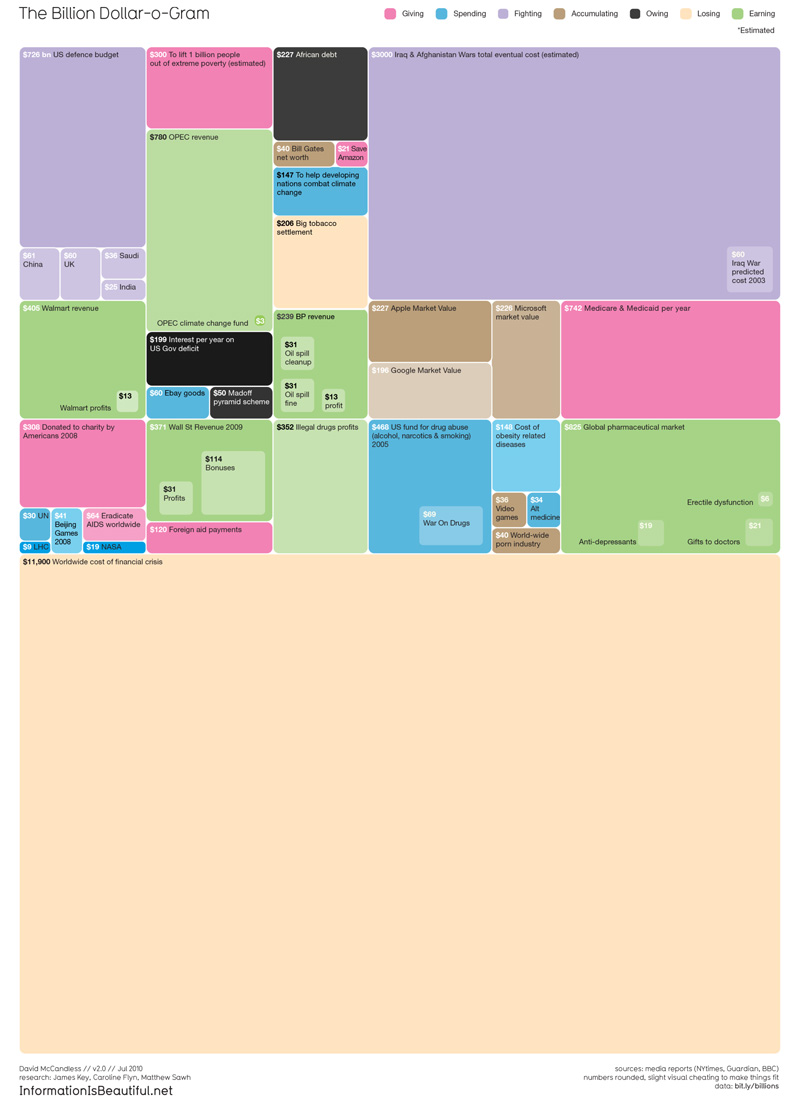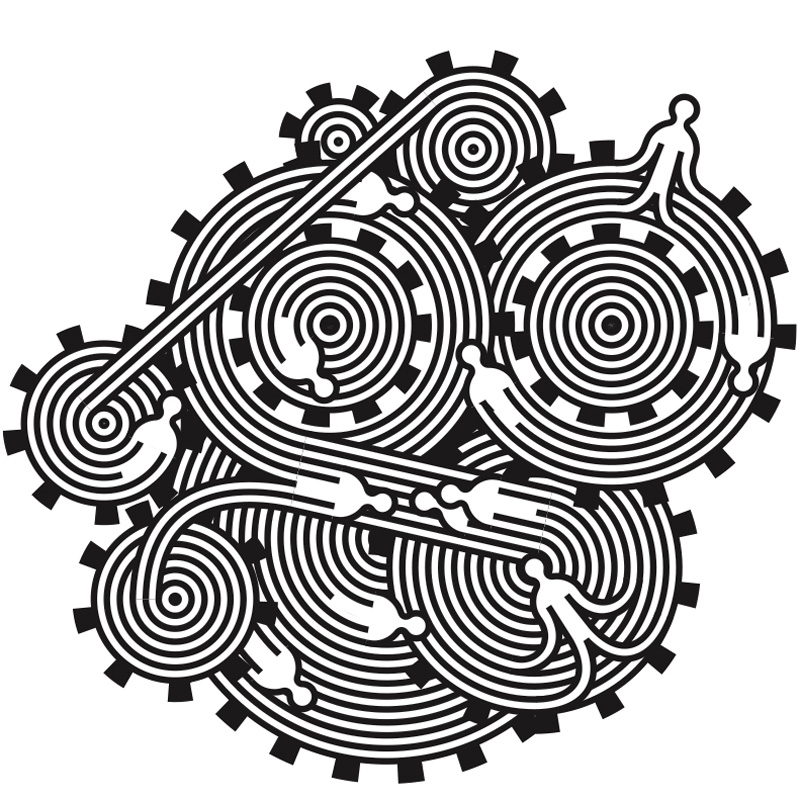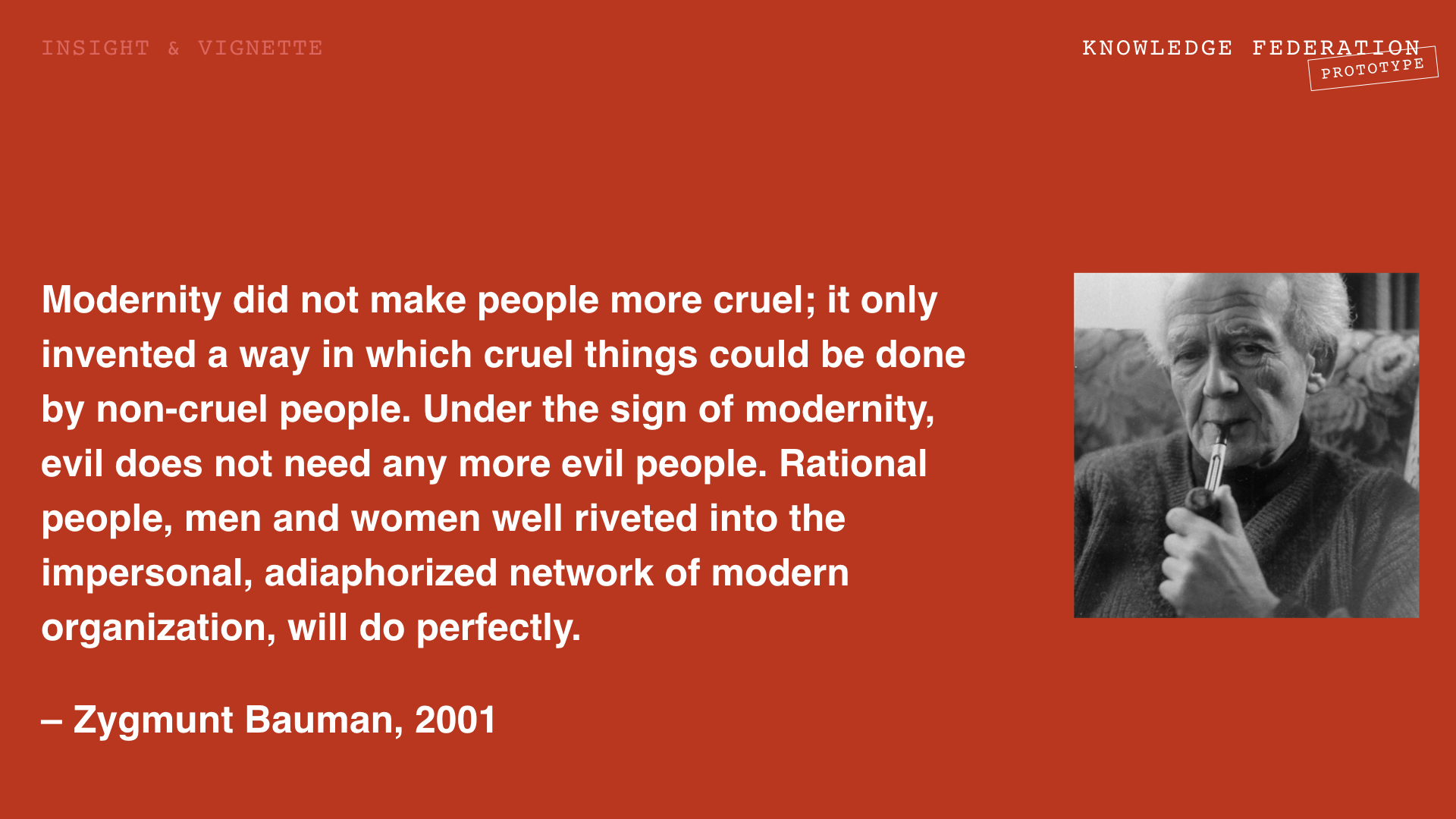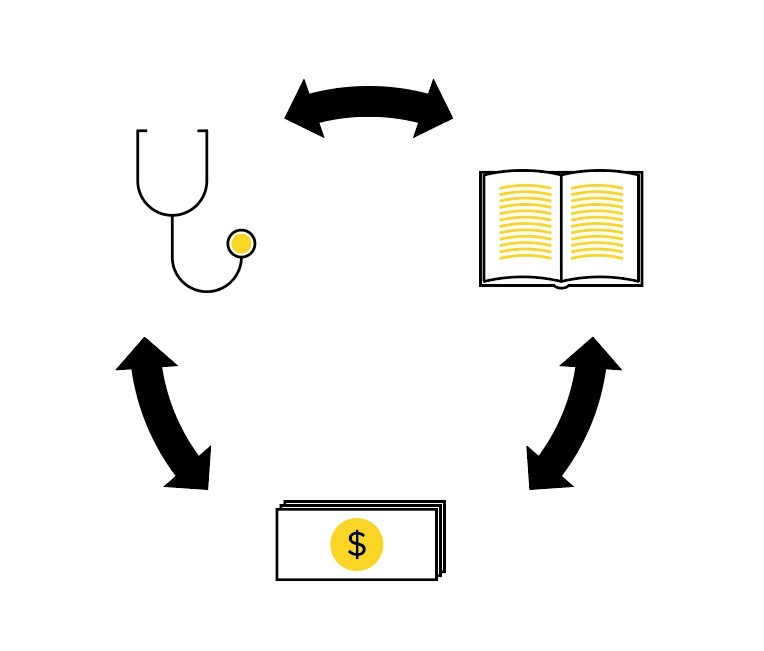Difference between revisions of "Holotopia: Power structure"
m |
m |
||
| Line 79: | Line 79: | ||
<p>The cruelty in modernity has changed its form, observed Bauman. It no longer requires cruel people; "normal" people, "just doing their jobs"—within the structure of a modern organization, will do perfectly.</p> | <p>The cruelty in modernity has changed its form, observed Bauman. It no longer requires cruel people; "normal" people, "just doing their jobs"—within the structure of a modern organization, will do perfectly.</p> | ||
<p>Perhaps the most daring of Zygmunt Bauman's aring ideas is that even the concentration camps were only extreme cases of cruelty that resulted in this way.</p> | <p>Perhaps the most daring of Zygmunt Bauman's aring ideas is that even the concentration camps were only extreme cases of cruelty that resulted in this way.</p> | ||
| − | |||
| − | |||
<h3>Bauman has not yet been heard</h3> | <h3>Bauman has not yet been heard</h3> | ||
| Line 146: | Line 144: | ||
<p>According to the conventional idea, in every political or power game there are winners and there are losers. There's our side, and there is "them". In this emerging scenario, <em>all of us</em> are losers! Those who see themselves as winners—do so because the <em>power structure</em> created their ideas of what winning and losing are about. It is indeed difficult to imagine a rational argument where anyone's "winning" is compatible with the kind of futures that the <em>power structures</em> are now leading us toward.</p> | <p>According to the conventional idea, in every political or power game there are winners and there are losers. There's our side, and there is "them". In this emerging scenario, <em>all of us</em> are losers! Those who see themselves as winners—do so because the <em>power structure</em> created their ideas of what winning and losing are about. It is indeed difficult to imagine a rational argument where anyone's "winning" is compatible with the kind of futures that the <em>power structures</em> are now leading us toward.</p> | ||
| + | <h3>Restoring ethics</h3> | ||
| + | <p>From here the <em>holotopia</em>'s "rule of thumb" logically follows, as ethical or <em>evolutionary</em> stance. | ||
| + | <p>When we follow the ethics that the modernity would have us follow, we <em>necessarily</em> co-create <em>power structures</em>. We become part of our "enemy". It's like having dirty hands—you soil everything you touch</p> | ||
| + | <p>The ethics of transcending egotism, of seeing ourselves as parts of something larger than ourselves, is of course ethics as it has always been. "The invisible hand" of free competition, that ethical <em>perpetuum mobile</em> that, we've believed, the modernity has given us, is now seen to be just a ploy that the <em>power structure</em> has devised, to bind ourselves to it.</p> | ||
| + | |||
| + | <h3>Rediscovering politics</h3> | ||
| + | <p>The traditional politics is, however, turned to its head by the <em>power structure</em> view. The politics has always been conceived as one group <em>against</em> another: The slaves against the slave owners, the workers against the capitalists, one country against the other, my interests against yours, us against them. But in the <em>power structure</em> view there is no "them", there is only "us"! So <em>collaboration</em>, rather than conflict and strife, self-organization against <em>the power structure</em> become the preferred mode of the political action.</p> | ||
| + | |||
| + | <div> <div> | ||
</div> </div> | </div> </div> | ||
| + | |||
| + | <!-- XXX | ||
<div class="row"> | <div class="row"> | ||
Revision as of 07:28, 26 June 2020
Contents
H O L O T O P I A: F I V E I N S I G H T S
Power structure
Powered by ingenuity of innovation, the Industrial Revolution revolutionized the efficiency of human work. Where could the next revolution of this kind be coming from?
We look at the systems in which we live and work. Imagine them as gigantic machines, comprising people and technology. Their function is to take people's daily work as input, and turn it into socially useful effects. If our work has become incomparably more efficient and yet we've remained busy—should we not see whether they might be wasting our time? And if our best efforts result in problems rather than solutions—should we not check whether they might be causing those problems?
Furthermore—as the above image may also illustrate—the systems in which we live and work determine our life quality most directly. How well are they serving us in that role?
Stories
Power structure wastes resources
A costly oversight
While the ingenuity of our innovation has been focused on small gadgets we can hold in our hand—those 'gigantic machines' constitute a proportionally more important, and yet overlooked creative frontier. How much is this oversight costing us?
On Page 4 of the article The Game-Changing Game–A Practical Way to Craft the Future we answered this question by giving a summary of our Ferguson–McCandless–Fuller thread, of which we here highlight the main points.
As always, our stories are intended to vividly illustrate rather than rigorously prove the proposed views.

David McCandless: The Billion-Dollar-o-Gram 2009
A quick look at David McCandless' Billion-Dollar-o-Gram 2009 will show that the costs of two issues ("Worldwide cost of financial crisis" and "Iraq & Afganistan wars total eventual cost") dominate the image so dramatically, that the costs of issues ("to lift one billion people out of extreme poverty", "African debt", "save the amazon"...) seem insignificant in comparison.
The largest costs are systemically caused
We tell the story of Charles Ferguson's two award-winning documentaries to highlight—as he did in his films—that those two issues were systemically caused. Or in other words that they were "inside jobs", as the title of Ferguson's second film suggested.
Fuller may have been right
In the late 1960s, Buckminster Fuller predicted that by the end of the century science and technology would have advanced enough to enable us, the people on the planet, to put an end to scarcity. And that our core challenge would be to reconfigure the use and distribution of those resources—which now sapped through scarcity-based competition.
What we have just seen suggests that Fuller may have been right.
In 1969 Fuller proposed to the American Senate a computer-based solution called the World Game. Its whose purpose was to enable the global policy makers to see the world as one, and collaborate on allocating and sharing its resources, instead of competing.
Power structure causes devolution
Competition vs. collaboration
But what is really the power structure? While our understanding will deepen gradually as we go along, what's we've just seen might already suggest that power structures are the systems in which we live and work, or "structures", that emerge when we compete instead of collaborating, and trust that "the invisible hand" of the "free market" will secure that the result is the best possible one.
This popular myth, that competition (rather than informed co-creation) leads to the best possible world, appears to follow from Darwin's theory of evolution. Isn't that the way in which nature uses her creativity?
"Unfortunately, the evidence, such as it is, is against this simple-minded theory", wrote Norbert Wiener.
On The Paradigm Strategy Poster (which was one of the forerunner prototypes to Holotopia) we used the homsky–Harari–Graeber thread to illustrate this point.
But what should we, really, have learned from Darwin? We preceded this thread by discussing Richard Dawkins' core insight, published in his 1976 book "The Selfish Gene". His point—which subsequently led to "memetics" as its application to cultural and societal evolution—was that the evolution must not be thought of as favoring utility or perfection of any kind, but the fittest or best adapted gene (or the fittest "meme", when it is cultural or social evolution we are talking about).
The "fittest" is not the best
So what does this mean, practically and concretely?
We answered this question by using the real-life history of "Alexander the Great" as a parable, as told by David Graeber, because it has all the elements we may want, to illustrate our points: The "fittest" system of its era (Alexander's army, with its corresponding "business model") was turning free people into slaves, destroying societies and cultures, homes, monasteries and palaces... and it even had "financial innovation" as one of its core elements!
The stories of Noam Chomsky and Noah Yuval Harari allow us to deepen our understanding of the dynamics that underlie the power structure devolution. We'll return to them when discussing the socialized reality insight.
You may be working for a psychopath
We supplemented a reflection on Joel Bakan's "the Corporation", to show that while today the most powerful power structure may look different than it did twenty-five centuries ago, its essential nature has remain unchanged.
As a law professor, Bakan explained how the modern corporation with time evolved to become the most powerful institution on the planet. And how—through a few centuries of legal maneuvering—it acquired the legal status of a person, but without the corresponding accountability. So Bakan asked—if the corporation is a person, what sort of person is it? In his documentary, and the corresponding book, Bakan showed that the corporation has all the characteristics that qualify a psychopath.
Power structure is us
The enemy is us
"We have seen the enemy, and he is us" said famously Pogo, Walt Kelly's cartoon hero. A funny idea for a cartoon; but could it be real?
Cruelty has been modernized
The cruelty in modernity has changed its form, observed Bauman. It no longer requires cruel people; "normal" people, "just doing their jobs"—within the structure of a modern organization, will do perfectly.
Perhaps the most daring of Zygmunt Bauman's aring ideas is that even the concentration camps were only extreme cases of cruelty that resulted in this way.
Bauman has not yet been heard
The movie "The Reader" allows us to extend Bauman's observations. And indeed in several most interesting ways.
By telling the story of a woman who, as a concentration camp guard, was part of an unthinkable cruelty because she was "only doing her job", and because "otherwise there would be chaos", the movie gives a vivid confirmation of Bauman's ideas.
Then there is scapegoating. As this film showed, while the order of things or the power structure was as it was, people simply adjusted to it and obeyed it. When, however, the order of things changed, they woke up as if from a dream—and started looking for a scapegoat. The culprit ended up being XX—perhaps the most naive and relatively most honorable of them all.
Finally, and perhaps the most striking, were the critical reactions to this film. While its Wikipedia page listed a number of descriptions, and quotations of critical responses, there is not a single word about this film's real and all-important theme. An issue to which we've given the name power structure—and endeavor now to legitimize it as an issue, and perhaps as the issue.
Systemic innovation is the key to solution
Erich Jantsch's insight
Having delivered the opening keynote at the inaugural meeting of The Club of Rome, Erich Jantsch clearly saw what needed to be done, if the "problematique" was to be resolved (see it outlined here and here).
Our society needs a new capability—to update the systems in which we live and work. Jantsch called it "systemic innovation", and we adopted from him this keyword.
We let Jantsch be the symbol of a missing link between two bodies of work and lines of interest: cybernetics or the systems sciences, and the need to make our civilization "sustainable". In this present holotopia prototype, those interests are symbolized respectively by Norbert Wiener and Aurelio Peccei.
Ideogram
The Power Structure ideogram depicts the power structure as an entity of a completely new kind.
The dollar sign in the ideogram represents the instruments of power as we are accustomed to perceive them: money, weapons, censorship, dictatorship...
The stethoscope represents health or wholeness, to begin with our own—which, in holotopia, you've already learned to perceive as indistinguishable from the wholeness of our institutions and other systems in which we live and work, and from the wholeness of our bio-physical life-support systems.
The book represents our culture in a most general sense, which includes our ideas about the world, ethical principles, laws and ways of handling information.
The point made by the Power Structure ideogram is that those three entities are so closely related, that they need to be perceived as a single entity. But that their relationships are not discernible by the naked eye; and that therefore suitable information, or the holoscope, needs to be used to make them visible.
A bit simpler and still correct interpretation would be to consider the dollar sign as representing just power; and to consider the stethoscope and the book as representing the 'hardware' and the 'software' of our society-and-culture. The message of the ideogram will then be that—in subtle ways, which need to be carefully understood or 'illuminated'—the power interests are capable to corrupt, and in effect co-opt the systems in which we live and work, and even the values and ideas that directly govern our own behavior.
Keywords
Power structure
Seeing the "enemy"
Every genuine revolution—and the holotopia is not an exception—includes a change of the way in which the issues of power, freedom and justice are perceived. Even nuances can make a difference. Just recall, for instance, the difference that was made by changing the meaning of the word "men", in its motto "All men are created equal" of the world's oldest living democracy, to include also black men, and women.
The power structure, however, is not a small change. We are talking about changing the very idea of "power holder"; of our potential political "enemy"—toward whom our precaution, and political action, need to be directed.
To create a whole new entity, which is not a visible object but a construction—and make it the central theme of the age-old human quest for freedom and justice—may at first seem implausible; even preposterous. It will take more than a moment of thought, in the light of the evidence shared with all five insights and even a bit more, to fully comprehend why this is perfectly legitimate; and the sweeping consequences it is leading us to.
A signature theme in knowledge federation is to combine the most basic insights reaching us from distinct fields of interest, to create an even more basic insight. The power structure construction involved a combination of the most basic insights from artificial intelligence, artificial life and stochastic optimization, to show why spontaneously emerging structures can evolve to have characteristics of living beings, endowed with intelligence and purpose—even without anyone's intention, or even awareness of its existence. A more complete explanation is given in the book manuscript Information Must Be Designed (the password for opening the chapters is Dubrovnik)—where the first three chapters explain the construction of new 'headlights', or of what we here call the holoscope; and where the fourth chapter shows why this new approach to knowledge is a necessary part of our society's 'immune system'—because without it, we cannot even see our enemy!
Here, however, we will illustrate the basic idea and the dynamics of the power structure by two metaphorical images. And we already see some of the explanatory and predictive power of this new way of looking.
Power structure as 'magnet'
Imagine us people as small magnets. Think of the magnetic field of the Earth as providing us a "natural" orientation—symbolizing the way we need to be aligned, to support the wholeness of our planetary and other systems.
Imagine that some of the magnets detached themselves from this field, and having perceiving "their own interests" differently, created a different field, by alining themselves together. As more and more people align themselves to this new field, the field becomes stronger—so that ultimately than the original orientation cannot even be felt.
This simplistic image illustrates several properties of the power structure, For instance that the power relationships are not visible but subtle. The 'field' just subtly orients the seemingly random or free movement of the magnets. And yet after many such subtle redirections—the result is that everyone is aligned, without even noticing that.
Another point made is that the greater power that we get by aligning ourselves to the power structure is an illusionary power—we only get to partake in the power of the power structure, by surrendering our own power to it. We enjoy the illusion of power only as long as our behavior is compliant to the interests of the power structure. <p>This simple model also helps us understand how Erich Jantsch and (as we shall see again and again in this presentation) so many of the 20th century's leading edge thinkers got ignored: They did not align themselves with the power structure. They were not only aligned with another 'magnetic field'—but they were also doing their best to realign others accordingly. But alas—they just didn't have enough power to do that.
Power structure as 'cancer'
It needs to be carefully understood that the power structure is not a recognizable entity, but a pattern. This can easily be understood if we imagine it as social-systemic cancer—which is also not a distinct entity, but a deformation of an organism's healthy tissues and organs. A cancer can grow beyond bounds and sap the organism's vitality, because the organism's immune system is failing to recognize it as a threat, and treats it as it does the organism's healthy tissues and organs.
Our challenge and opportunity will then be to find remedies to this pervasive systemic illness.
The enemy is us
The power structure model turns the conventional idea of power and politics on its head. We see that we are "the enemy". Our social order of things, our culture, values, ideas...
However angry we may feel, there is nobody to blame. On the contrary—we are all in this together.
According to the conventional idea, in every political or power game there are winners and there are losers. There's our side, and there is "them". In this emerging scenario, all of us are losers! Those who see themselves as winners—do so because the power structure created their ideas of what winning and losing are about. It is indeed difficult to imagine a rational argument where anyone's "winning" is compatible with the kind of futures that the power structures are now leading us toward.
Restoring ethics
From here the holotopia's "rule of thumb" logically follows, as ethical or evolutionary stance. <p>When we follow the ethics that the modernity would have us follow, we necessarily co-create power structures. We become part of our "enemy". It's like having dirty hands—you soil everything you touch
The ethics of transcending egotism, of seeing ourselves as parts of something larger than ourselves, is of course ethics as it has always been. "The invisible hand" of free competition, that ethical perpetuum mobile that, we've believed, the modernity has given us, is now seen to be just a ploy that the power structure has devised, to bind ourselves to it.
Rediscovering politics
The traditional politics is, however, turned to its head by the power structure view. The politics has always been conceived as one group against another: The slaves against the slave owners, the workers against the capitalists, one country against the other, my interests against yours, us against them. But in the power structure view there is no "them", there is only "us"! So collaboration, rather than conflict and strife, self-organization against the power structure become the preferred mode of the political action.




